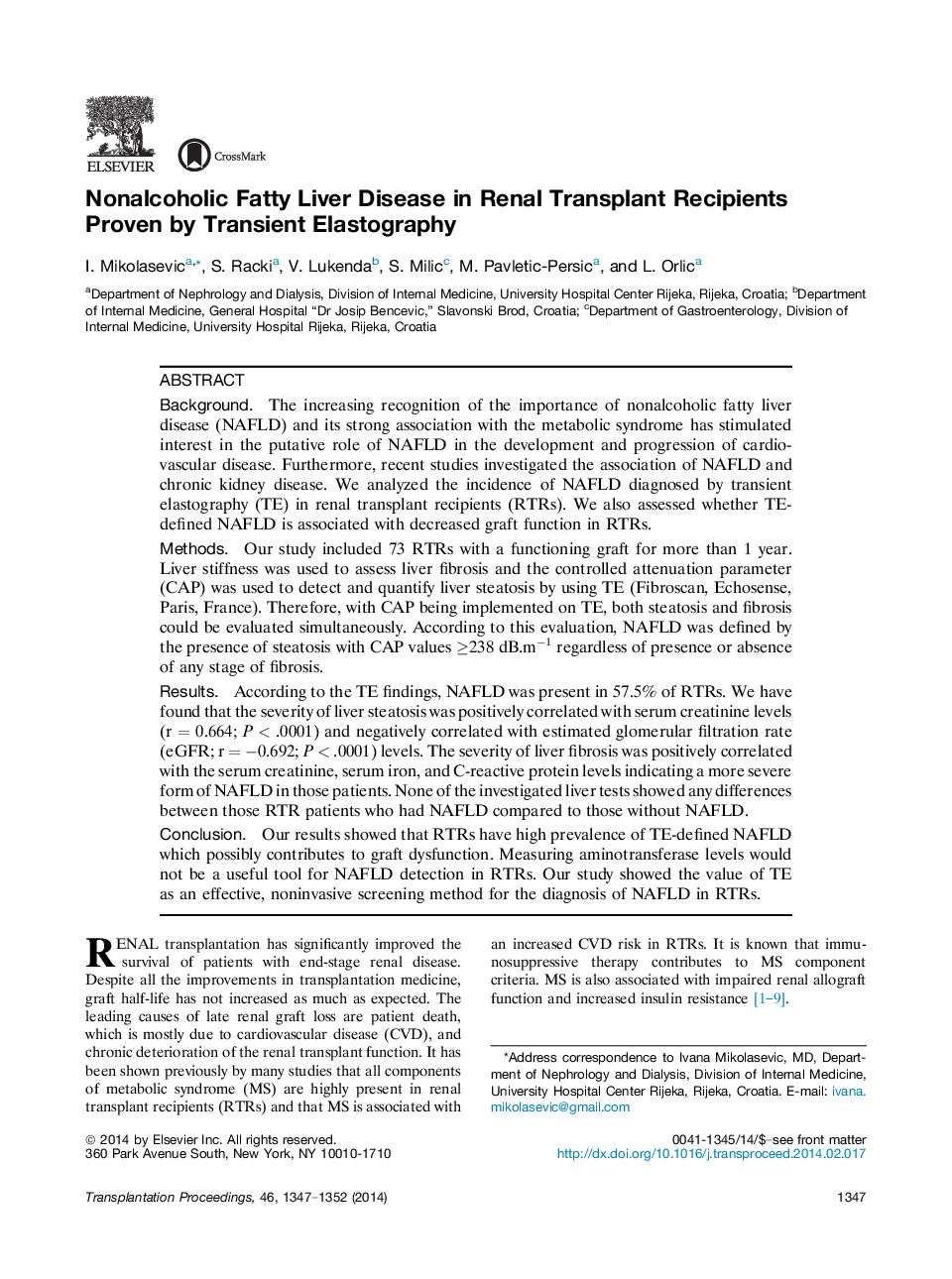| کد مقاله | کد نشریه | سال انتشار | مقاله انگلیسی | نسخه تمام متن |
|---|---|---|---|---|
| 6246248 | 1284488 | 2014 | 6 صفحه PDF | دانلود رایگان |
BackgroundThe increasing recognition of the importance of nonalcoholic fatty liver disease (NAFLD) and its strong association with the metabolic syndrome has stimulated interest in the putative role of NAFLD in the development and progression of cardiovascular disease. Furthermore, recent studies investigated the association of NAFLD and chronic kidney disease. We analyzed the incidence of NAFLD diagnosed by transient elastography (TE) in renal transplant recipients (RTRs). We also assessed whether TE-defined NAFLD is associated with decreased graft function in RTRs.MethodsOur study included 73 RTRs with a functioning graft for more than 1 year. Liver stiffness was used to assess liver fibrosis and the controlled attenuation parameter (CAP) was used to detect and quantify liver steatosis by using TE (Fibroscan, Echosense, Paris, France). Therefore, with CAP being implemented on TE, both steatosis and fibrosis could be evaluated simultaneously. According to this evaluation, NAFLD was defined by the presence of steatosis with CAP values â¥238 dB.mâ1 regardless of presence or absence of any stage of fibrosis.ResultsAccording to the TE findings, NAFLD was present in 57.5% of RTRs. We have found that the severity of liver steatosis was positively correlated with serum creatinine levels (r = 0.664; P < .0001) and negatively correlated with estimated glomerular filtration rate (eGFR; r = â0.692; P < .0001) levels. The severity of liver fibrosis was positively correlated with the serum creatinine, serum iron, and C-reactive protein levels indicating a more severe form of NAFLD in those patients. None of the investigated liver tests showed any differences between those RTR patients who had NAFLD compared to those without NAFLD.ConclusionOur results showed that RTRs have high prevalence of TE-defined NAFLD which possibly contributes to graft dysfunction. Measuring aminotransferase levels would not be a useful tool for NAFLD detection in RTRs. Our study showed the value of TE as an effective, noninvasive screening method for the diagnosis of NAFLD in RTRs.
Journal: Transplantation Proceedings - Volume 46, Issue 5, June 2014, Pages 1347-1352
